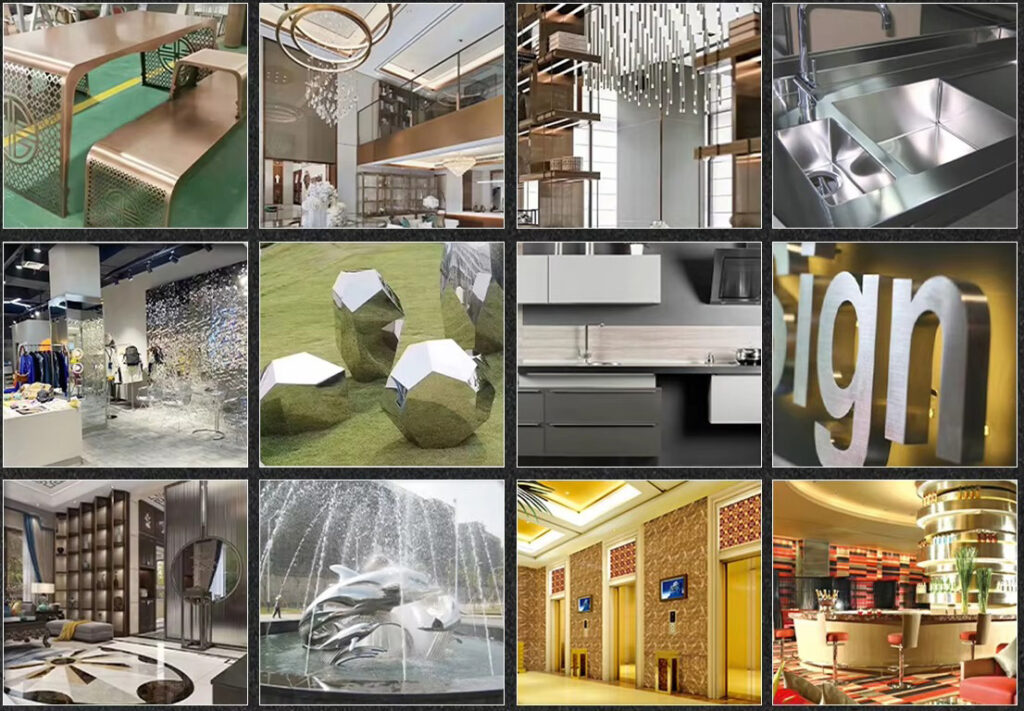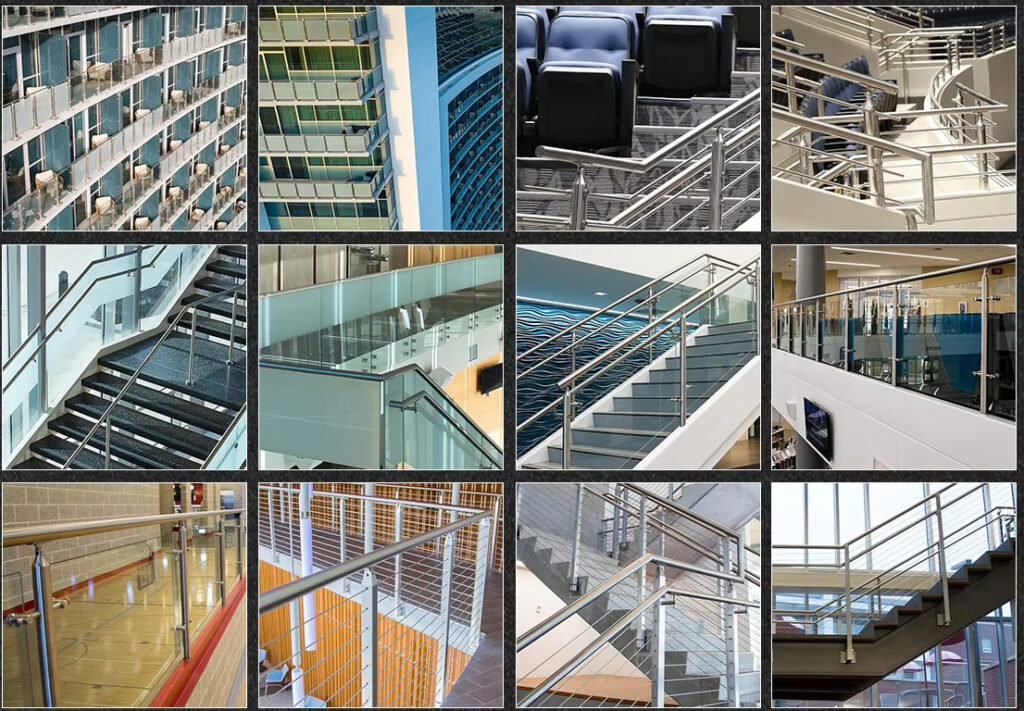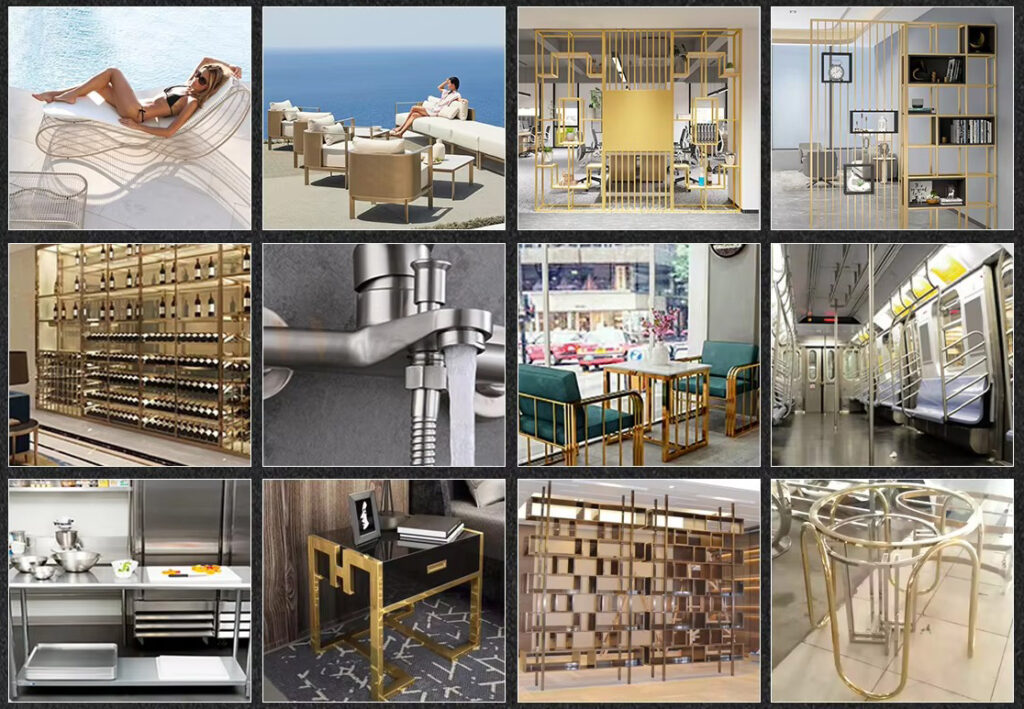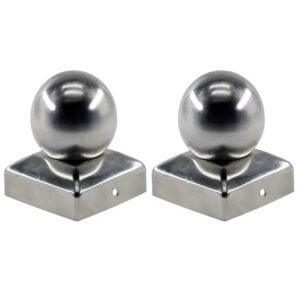
Post caps & end caps (round, square, decorative)
Post caps & end caps in 316L stainless steel. 23 years precision manufacturing for decorative applications worldwide. Request quote today.

Post caps & end caps in 316L stainless steel. 23 years precision manufacturing for decorative applications worldwide. Request quote today.
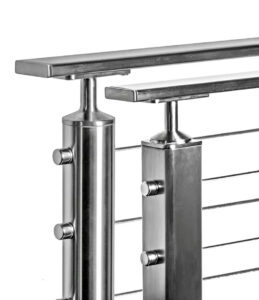
Square stainless steel posts in 304/316L grades. 23 years precision manufacturing for coastal projects worldwide. Request quote today.
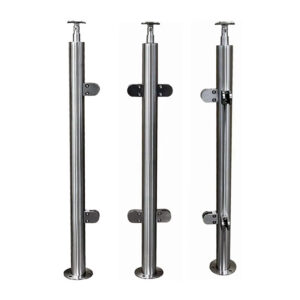
Stainless steel posts in 304/316L grades. 23+ years ODM fabrication for marine & commercial applications. Contact factory today.
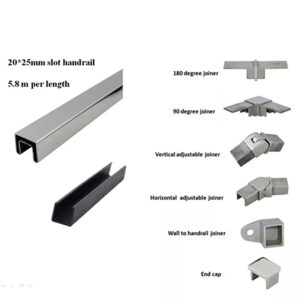
Square top rail components in 316L stainless steel. 23+ years precision manufacturing for global applications. Contact factory today.
Project-specific hardware in 316L stainless steel. 23 years delivering tailored solutions for specialized projects worldwide. Get factory quote today.
Non-standard size components in 316L stainless steel. 23+ years ODM manufacturing for unique sizing requirements globally. Contact us today.
| Specification | Our Stainless Steel Wall Mount Handrails | Standard Aluminum Wall Mount Rails | Competitive Advantage |
|---|---|---|---|
| Material Grade | 304/316 Marine Stainless Steel | 6061-T6 Aluminum Anodized | Superior corrosion resistance and longevity |
| Tensile Strength | 590 MPa (304/316 grade) | 310 MPa maximum | 90% higher structural performance |
| Wall Clearance | 1.5″-3.0″ adjustable | Fixed 1.5″ standard | Customizable ergonomic spacing |
| Tube Diameter | 1.25″-2.0″ (32mm-50mm) | Limited size options | Code-compliant grip dimensions |
| Bracket Spacing | 36″ maximum centers | 48″ maximum centers | 33% more support points for safety |
| Load Capacity | 250 lbs/linear foot | 150 lbs/linear foot | 67% higher load-bearing capability |
| Operating Temperature | -40°C to +400°C | -30°C to +150°C | Extended thermal range capability |
| Service Life | 25+ years guaranteed | 10-15 years typical | 150% longer operational lifespan |
Superior Structural Performance vs. Alternative Materials
Our stainless steel wall mount handrails deliver exceptional grip strength and dimensional stability compared to aluminum alternatives that can deform under load. While wooden handrails require regular maintenance and refinishing every 3-5 years, our 304/316 stainless steel construction provides permanent structural integrity that eliminates warping, cracking, and coating failures common in other materials.
Enhanced Safety and Code Compliance
The precision-engineered tube profiles maintain consistent 1.25″-2.0″ diameter specifications required by IBC and ADA standards, ensuring optimal grip ergonomics that aluminum extrusions often fail to achieve due to manufacturing tolerances. Our bracket systems provide 1.5″-3.0″ adjustable wall clearance that accommodates varying hand sizes while meeting accessibility requirements.
Advanced Corrosion Protection Technology
316 marine-grade stainless steel handrails withstand 500+ hours of salt spray exposure without degradation, compared to anodized aluminum that fails within 200 hours. The chromium-nickel-molybdenum alloy composition creates an inherent passivation layer that self-repairs surface damage, eliminating the coating maintenance and replacement cycles required by painted steel alternatives.
Space-Efficient Design Optimization
Wall-mounted configurations provide maximum space utilization compared to floor-mounted railing systems, making them ideal for narrow staircases and corridors where traditional railings would impede traffic flow. The sleek profile complements modern architectural elements while delivering superior functionality compared to bulky wooden handrails.
Hospital and Healthcare Facility Corridors
Medical environments require antimicrobial stainless steel handrails that support patient mobility while meeting stringent hygiene standards. Our electropolished finishes eliminate bacterial harbor points and withstand daily sanitization with hospital-grade disinfectants that would damage aluminum anodizing within months.
Luxury Residential Staircase Installations
High-end homes utilize 316 marine-grade wall mount handrails on curved staircases where custom bending capabilities and premium finishes are essential. The corrosion-free performance maintains property value while providing elegant support that wooden alternatives cannot match without constant refinishing.
Commercial Office Building Egress Routes
Corporate facilities install 304 stainless steel handrails in stairwells and exit corridors where building codes require heavy-duty performance and 25+ year service life. Our systems eliminate the liability issues associated with aluminum handrail failures under emergency egress loading conditions.
Industrial Platform Access Systems
Manufacturing facilities require chemical-resistant wall mount handrails on elevated walkways where process vapors and temperature fluctuations would corrode aluminum within 2-3 years. Our 316 stainless steel construction maintains worker safety in environments where coating failures create hazardous conditions.
Assisted Living and Senior Housing Facilities
Elder care environments demand continuous wall mount handrails that provide reliable support for residents with mobility challenges. The smooth, splinter-free surface and consistent grip diameter ensure safety while eliminating the maintenance disruptions associated with wooden handrail refinishing in occupied facilities.
Educational Institution Accessibility Compliance
Schools and universities install ADA-compliant stainless steel handrails in corridors and stairwells where durability and vandal resistance are critical. Our systems withstand heavy student traffic and impact damage that would compromise aluminum installations within the first academic year.
What building codes govern wall mount handrail installations in commercial and residential applications?
Wall mount handrails must comply with IBC Section 1014 requiring 34″-38″ height, 1.5″ minimum wall clearance, and 200-pound load capacity. Residential installations follow IRC Section R311.7.8 with similar requirements but may allow single-side installation. Our bracket systems ensure code compliance with documented load testing exceeding requirements by 100% safety margins.
How do 304 and 316 stainless steel grades compare for different wall mount handrail environments?
304 stainless steel provides excellent performance for indoor and mild outdoor environments, offering superior strength and aesthetics compared to aluminum. 316 grade includes molybdenum for enhanced chloride resistance, making it essential for coastal properties within 5 miles of saltwater, medical facilities requiring frequent sanitization, and industrial environments with chemical exposure.
What wall clearance dimensions are required for ADA compliance and optimal ergonomics?
ADA standards require minimum 1.5″ clearance between handrail and wall surface, with maximum 4.5″ projection from wall. Our adjustable bracket systems provide 1.5″-3.0″ clearance options to accommodate different hand sizes and accessibility needs while maintaining structural integrity and aesthetic appeal.
Can stainless steel wall mount handrails accommodate curved or angled staircase configurations?
Yes, our handrails can be custom-bent to accommodate radius curves, angular transitions, and complex architectural geometries. The superior ductility of stainless steel allows smooth bending without cracking or weakening, while aluminum alternatives often require mechanical joints that compromise appearance and structural continuity.
How do maintenance requirements compare between stainless steel and other handrail materials?
Stainless steel handrails require only periodic cleaning with pH-neutral solutions every 6-12 months depending on environmental exposure. No painting, staining, or coating renewal is required. Wooden handrails need refinishing every 3-5 years, while aluminum systems require anodizing inspection and potential refinishing every 10-15 years.
What bracket spacing and mounting requirements ensure proper structural support?
Our brackets should be spaced maximum 36″ on center with end brackets positioned within 6″ of handrail terminations. Wall mounting requires minimum 3.5″ screws into solid wood studs or equivalent structural support. Masonry installations use expansion anchors rated for 500-pound pullout loads to ensure safety margins exceed code requirements.
Are there special considerations for heavy-traffic commercial installations?
Commercial environments require enhanced bracket spacing at 24″-30″ centers and heavy-duty mounting systems rated for continuous use. We recommend 316 stainless steel for hospitals, schools, and public buildings where frequent cleaning and impact resistance are critical. Electropolished finishes provide optimal hygiene and vandal resistance.
How do stainless steel wall mount handrails perform in extreme temperature environments?
Stainless steel maintains structural properties from -40°C to +400°C, far exceeding aluminum and wood limitations. Thermal expansion is minimal compared to aluminum, preventing bracket loosening during temperature cycling. This makes stainless steel ideal for outdoor installations, industrial facilities, and climate-controlled environments where other materials would fail.
Building Code Compliance Standards
Wall mount handrails must comply with IBC Section 1014 handrail requirements and ADA Section 505 accessibility standards for grip dimensions, wall clearance, and load capacity. Installation follows ASTM F1169 load testing procedures with documented proof loads at 1.5 times design requirements. Professional engineering certification available for non-standard applications exceeding code minimums.
Material Specifications and Certifications
Handrails manufactured from ASTM A554 stainless steel tubing with certified mill test certificates documenting chemical composition and mechanical properties. Bracket assemblies conform to ASTM A276 specifications for dimensional accuracy and surface finish standards. Marine-grade 316 installations include NACE SP0169 atmospheric corrosion compliance for coastal environments.
Load Testing and Structural Performance
All handrail systems undergo tensile testing per ASTM A370 standards with documented ultimate strength verification exceeding 590 MPa. Bracket assemblies tested to ASTM F1169 procedures with 300-pound concentrated loads and 50 pounds per linear foot uniform loads, exceeding IBC requirements by 100% safety margins for commercial applications.
Corrosion Resistance Testing
Salt spray testing per ASTM B117 standards demonstrates 500+ hour performance for 316 grade installations. Pitting resistance evaluation follows ASTM G48 Method A for chloride exposure conditions. Atmospheric exposure testing verifies long-term performance in urban, industrial, and marine environments where aluminum alternatives show rapid degradation.
Quality Assurance and Manufacturing Standards
Production follows ISO 9001:2015 quality management with documented material traceability and inspection procedures. Tube bending maintains ±2mm tolerance for dimensional accuracy and consistent wall clearance. Surface finish standards achieve 32 Ra maximum for brushed finishes and 8 Ra maximum for mirror polish applications.
Installation Safety and Professional Standards
Installation procedures meet OSHA 1926.502 fall protection standards for construction safety requirements. Professional installation certification available through certified contractor programs for complex commercial applications requiring structural engineering calculations and permit approval. Seismic installations meet ASCE 7 requirements for essential facilities and high-occupancy buildings.
